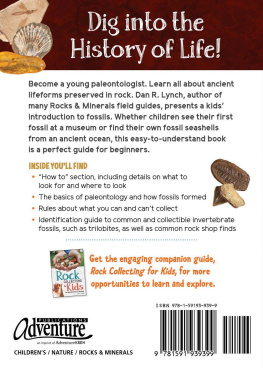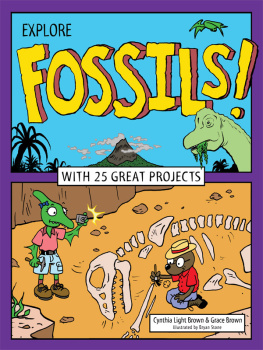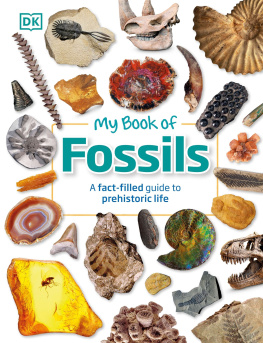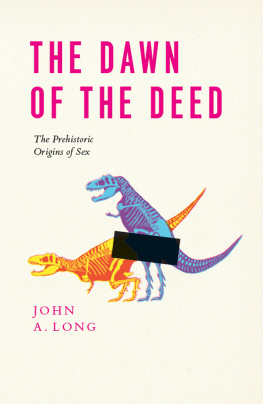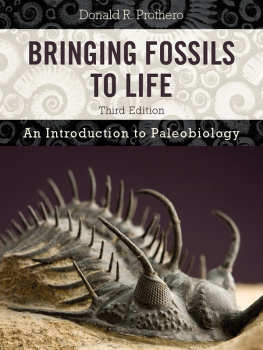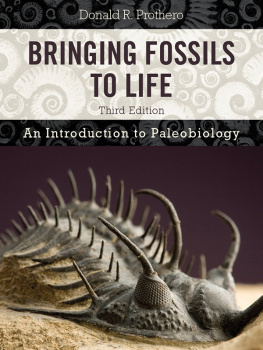Embryos in Deep Time
Embryos in Deep Time
The Rock Record
of Biological Development
Marcelo Snchez

University of California Press, one of the most distinguished university presses in the United States, enriches lives around the world by advancing scholarship in the humanities, social sciences, and natural sciences. Its activities are supported by the UC Press Foundation and by philanthropic contributions from individuals and institutions. For more information, visit www.ucpress.edu .
University of California Press
Berkeley and Los Angeles, California
University of California Press, Ltd.
London, England
2012 by The Regents of the University of California
Library of Congress Cataloging-in-Publication Data
Snchez, Marcelo R.
Embryos in deep time : the rock record of biological development / Marcelo R. Snchez.
p. cm.
Includes bibliographical references and index.
ISBN 978-0-520-27193-7 (cloth : alk. paper)
1. Paleobiology. 2. Embryos. 3. Developmental genetics. I. Title.
QE719.8.S26 2012
560dc23
2011034435
Manufactured in the United States of America
21 20 19 18 17 16 15 14 13 12
10 9 8 7 6 5 4 3 2 1
The paper used in this publication meets the minimum requirements of ANSI/NISO Z39.481992 (R 1997) (Permanence of Paper).
CONTENTS
ACKNOWLEDGMENTS
I would like to thank the University of Zrich and its Faculty of Science, as well as the Institute of Paleontology, for providing an inspiring, challenging, and supportive environment in which I could write this book.
I thank current and past members of my lab and close colleagues for everything I learned from them: Ingmar Werneburg, Laura Wilson, Torsten Scheyer, Christian Mitgutsch, Massimo Delfino, Jasi Hugi, Christian Kolb, Dai Koyabu, James Neenan, Fredy Carlini, Sandrine Ladevze, Corinne Wimmer, Jan Prochel, Peter Menke, Madeleine Geiger, Katja Polachowski, Fiona Straehl, Patricia Meier, Vera Weisbecker, Fernando Galliari, Lisa Rager, Thomas Schmelzle, and Anjali Goswami. I also thank several colleagues in Zrich and abroad for discussion of ideas and for kindly providing information: Lennart Olsson, Shigeru Kuratani, Mike Richardson, Hiroshi Nagashima, Hugo Bucher, Tom Kemp, John Spice, Norberto Giannini, Johannes Mller, Rainer Schoch, Shige Kuraku, Andreas Wagner, Ins Horovitz, Orangel Aguilera, Lionel Hautier, Renaud Lebrun, Anjali Goswami, Norm MacLeod, Rick Madden, Martin Sander, Kathleen Smith, Paul Taylor, Rafael Jimnez, Nico Goudemand, Claude Monet, Michael Hautmann, Christian Klug, Heinz Furrer, Richard Hoffmann, Kenneth de Baets, Thomas Martin, Alexander Ntzel, Claudia Hoffmann, Fredy Carlini, Karin Niffeler, and Sverine Urdy. I thank the contributors to the issue of Seminars in Cell and Developmental Biology that I edited in 2010, for helping to inspire this book: Richard Cloutier, Zerina Johanson, Moya Smith and colleagues, Louise Humphrey, Christoph Zollikofer, Marcia Ponce de Len, Martin Sander, Nicole Klein, Nadia Frbisch, Florian Witzmann, Rainer Schoch, Jennifer Olori, Torsten Scheyer, and Massimo Delfino.
Rob Asher in Cambridge, England, Laura Wilson and Torsten Scheyer in Zrich, and Ann-Christin Honnen in Berlin kindly and critically read early drafts and made very useful suggestions. Three anonymous reviewers and especially Michel Laurin very generously provided critiques and suggestions that improved the clarity of this work and helped me to avoid mistakes. Torsten Scheyer, Christian Mitgutsch, James Neenan, Lisa Rager, Kevin de-Carli (Zrich) and Nigel Hughes (Riverside) kindly revised parts of the text. Torsten Scheyer and Jasi Hugi provided much-needed advice on the paleohistology chapter; Christian Mitgutsch, on ontogeny and historical matters. Zhe-Xi Luo shared information on early mammals with his usual collegiality and good humor. Sverine Urdy (Zrich) generously provided extensive comments and insights relevant to bugs and shells. Any infelicities or inaccuracies that remain are entirely my responsibility.
For help with graphics and formatting issues, I thank Morana Mihaljevic, Kevin De-Carli, Rosi Roth, Fiona Straehl, and Torsten Scheyer. Madeleine Geiger, Katja Polachowski, and Claudia Joehl skillfully prepared some of the figures. John A. Long (Los Angeles), Matt Friedman (Oxford), Jasmina Hugi (Zrich), Joachim Haug (New Haven), Pancho Goin (La Plata), Zhe-Xi Luo (Pittsburgh), Torsten Scheyer (Zrich), Christian Klug (Zrich), Christoph Zollikofer and Marcia Ponce de Len (Zrich), Loc Costeur (Basel), and Rainer Schoch (Stuttgart) very generously made figures available.
For crucial and superb assistance, I thank Heike Gtzmann for administrative matters and Heini Walter for IT matters. I also thank my Institutes director, Hugo Bucher, for his support.
Lynn Meinhardt, Kate Warne, and Chuck Crumly of the University of California Press promptly answered my many questions during the editorial process and kindly provided much advice on a variety of matters, and Sheila Berg provided very useful and comprehensive editorial and stylistic remarks on the manuscript.
Wolfgang Maier in Tbingen has inspired my interest in ontogeny over the years and has been a much-appreciated mentor.
Peter Holzwarth in Zrich, Rob Asher in Cambridge, AnnChristin Honnen in Kiel and Berlin, and my mother, Gloria Villagra, in Puerto La Cruz/Buenos Aires provided moral support.
In the past few years I have been supported primarily by the Swiss Research Council (SNF) and by the University of Zrich.
PROLOGUE
The diversity of life is usually presented in evolutionary trees: A branching pattern culminates in figures of animals and plants. This is good, as trees convey the common history that organisms, including ourselves, share. But there is a limitation in this kind of representation. The organisms portrayed are static entities, usually adults with the recognizable features of their species. In reality, organisms change throughout their lives. If we wanted to portray the biology of biodiversity, we could show for each organism a high-speed film of the different phases of its life historyfor a multicellular organism, from fertilization to death. The kinds and number of changes that occur over the life course are so numerous and complex that different scientific disciplines are devoted to each phase of the process. The first steps of cell division and formation of an embryo are associated with embryology. Much research in this area concerns, for example, gastrulation, the phase in which the germ layers are formed and the body plan of the mature organism is established. Developmental biologists tend to study the point of occurrence or origin of tissues and organs. Comparative anatomists and zoologists are usually concerned with changes occurring after birth, which some biologists like to call growth, as opposed to development. For all these disciplines, molecular biology has offered methods and concepts to address a whole new set of questions concerning the mechanistic bases of life history evolution, also reviving old ones posed by morphologists.
Individual development is a rich subject of investigation in biology. But what about the fact that most species represented on the tree of life are extinct? Some may think that developmental biology needs paleontology like a fish needs a bicycle. They might also claim that the fossil record appears to be totally silent about many aspects of developmental evolution and genetics. I do not think this is the case, and I have written this book to explain why. Of course, paleontology remains largely silent about major topics such as gastrulation. Defining the limits of what paleontology can achieve is thus important. In this context, I am reminded of the contributions of a famous fish anatomist to the discussions in the 1980s about the role of fossils versus molecules in reconstructing the tree of life. Colin Patterson (193398), a major figure in the study of fossils who was based for decades in the paleontology department of the Natural History Museum in London, strongly advocated the primacy of information on living species over fossils when investigating evolutionary relationships. He was severely criticized by most fellow paleontologists. Several years later his ideas became much appreciated, and in 1996 he was awarded the Romer-Simpson Medal, the highest recognition of the Society of Vertebrate Palaeontology. The role of paleontology in reconstructing the tree of life is largely recognized by most biologists, in spite of the limitations of working with fragmentary data, which contrasts greatly with the large database of information (e.g., genomic) now known for an increasing number of living species.
Next page

